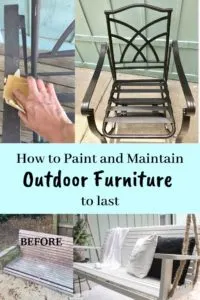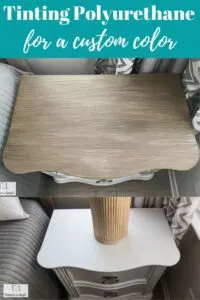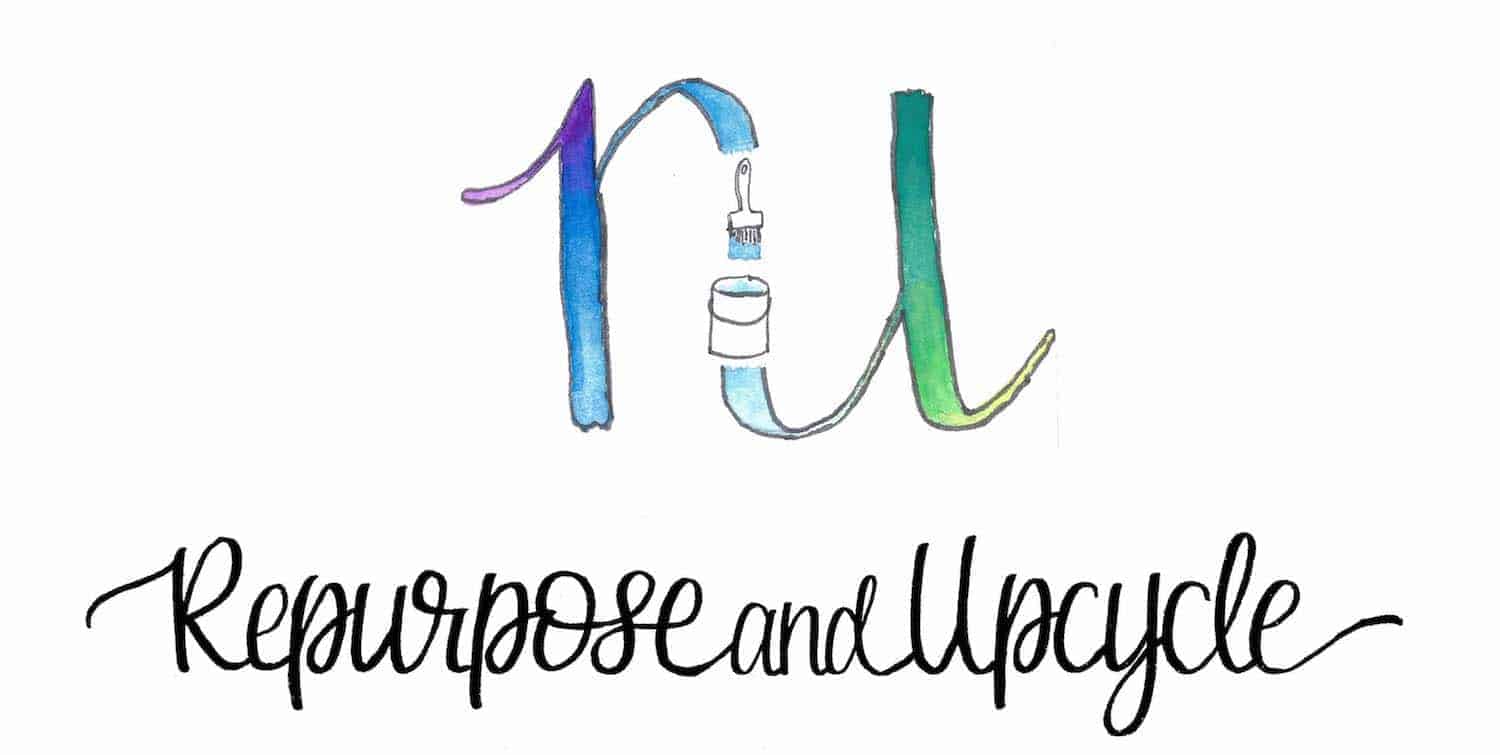Spray paint is a versatile and convenient way to add color and texture to a variety of surfaces. With so many different types of spray paint available, it can be overwhelming to choose the right one for your project. I hope to shed a little more light on this subject.
One of the most popular types of spray paint is acrylic. Acrylic spray paint is water-based and dries quickly, making it a great choice for indoor and outdoor projects. It can be used on a variety of surfaces, including wood, metal, and plastic.
Another common type of spray paint is enamel. Enamel spray paint is oil-based and creates a hard, glossy finish that is resistant to scratches and chipping. It is often used on metal surfaces, such as cars and appliances, but can also be used on wood and plastic.

Related posts:
How to pick the right type of paint for any project
DIY Modern Vintage Style Chair Makeover with Gold Spray Paint
DIY Mercury Glass Vases with Krylon Looking Glass Spray Paint
Table of Contents
Understanding Spray Paint
Before choosing a spray paint, always consider the surface you will be painting, the type of finish you want, and the environment in which you will be painting. Here are some of the most common types of spray paint and their characteristics:
- Acrylic Spray Paint: Acrylic spray paint is a water-based paint that dries quickly and is easy to clean up. It is ideal for use on a variety of surfaces, including wood, metal, and plastic. Acrylic spray paint is available in a range of finishes, from matte to glossy.
- Oil-Based Spray Paint: Oil-based spray paint is a durable and long-lasting option for painting metal surfaces. It is resistant to rust and corrosion and provides a smooth, even finish. However, oil-based spray paint can be difficult to clean up and may require the use of solvents.
- Enamel Spray Paint: Enamel spray paint is a high-quality paint that is ideal for use on metal surfaces. It provides a strong, durable finish that is resistant to chipping and fading. Enamel spray paint is available in a range of colors and finishes, including gloss, semi-gloss, and satin.
- Chalk Spray Paint: Chalk spray paint is a popular choice for furniture and home decor projects. It provides a matte, chalky finish that is perfect for creating a vintage or shabby chic look. Chalk spray paint is easy to distress and can be used on a variety of surfaces, including wood, metal, and glass. The downside to this spray paint is that it most always requires a top coat.
Types of Spray Paint
There are several types of spray paint available in the market, each with its unique properties and characteristics. Choosing the right type of spray paint depends on the surface to be painted and the desired outcome. Here are the most common types of spray paint:
Enamel
Enamel spray paint is a popular choice for painting metal, plastic, and wood surfaces. It is known for its high-gloss finish and durability, making it ideal for painting objects that are exposed to harsh weather conditions. Enamel spray paint dries to a hard, smooth finish and is available in a wide range of colors.
Enamel spray paints are a great choice if you are painting or touching up outdoor furniture. As a matter of fact, I recently used an enamel paint to touch up an old rusty metal chair. Let me show you.

Acrylic
Acrylic spray paint is a water-based paint that dries quickly and provides a matte finish. It is ideal for painting surfaces such as canvas, paper, and cardboard. Acrylic spray paint is also suitable for painting plastic and metal surfaces, but it requires a primer to adhere properly. It is available in a wide range of colors and is known for its fade-resistant properties.
Acrylic spray paint is probably one of the most widely used spray paints as it is easier to clean up and less fumes/harsh chemicals to worry about. I would suggest using an acrylic spray paint if you are going to be painting something that you will be bringing inside. Just note that acrylic paint might not bond as well as say an enamel paint so you need to use a primer spray paint product if the surface is clean and smooth.
I recently tested an acrylic spray paint product with a Rust Oleum fabric spray paint. Most fabric paints are a specific type of acrylic paint that bonds well and becomes flexible when dry.

Polyurethane
Polyurethane spray paint is a high-performance sealer that provides a durable finish in a few different finishes. It is ideal for painting surfaces that are exposed to high traffic and wear and tear, such as furniture, floors, and cabinets. Polyurethane spray paint is also resistant to chemicals and stains, making it suitable for painting industrial surfaces. It is available mostly in clear options.
You could mix your own polyurethane with a tint or dye to create a custom color like I did below. That being said, it wouldn’t be in a spray paint bottle option.

Disclosure; this post contains affiliate links. As an Amazon Associate I earn from qualifying purchases. This does not affect the price you pay. This disclosure statement refers to the rest of the amazon links and other affiliate links in this post.
Epoxy
Epoxy spray paint is a two-part paint that provides a hard, glossy finish. It is ideal for painting metal surfaces, such as appliances, machinery, and vehicles. Epoxy spray paint is known for its resistance to corrosion, chemicals, and abrasion. It is available in a limited range of colors and most of the time requires a primer to adhere properly.
Rustoleum makes a good appliance epoxy. Although I’ve never used it, I’ve heard great things about it.
High Heat
High heat spray paint is designed to withstand high temperatures and is ideal for painting surfaces that are exposed to heat, such as grills, stoves, and engines. It is normally available in a handful of colors and provides a durable, glossy finish. High heat spray paint is known for its resistance to fading, chalking, and peeling.
Factors to Consider When Choosing Spray Paint
When it comes to choosing the right spray paint, there are several factors to consider. The following sub-sections will explore some of the most important factors to keep in mind.
Surface Material
One of the most important factors to consider when choosing spray paint is the surface material that you will be painting. Different materials require different types of paint for optimal results. For example, if you are painting metal, you will need a paint that is designed to adhere to metal surfaces. If you are painting plastic, you will need a paint that is formulated to stick to plastic.
Durability
Another important factor to consider is durability. If you are painting an item that will be exposed to the elements, such as outdoor furniture or a car, you will want a paint that is durable enough to withstand the elements. Look for paints that are designed for outdoor use, and that are formulated to be resistant to fading, chipping, and peeling.
Finish
The finish of the paint is also an important consideration. Different finishes can create different effects. Some common finishes include:
- Matte: A flat, non-reflective finish that is great for hiding imperfections.
- Satin: A low-luster finish that is more reflective than matte, but less reflective than glossy.
- Glossy: A high-shine, reflective finish that is great for highlighting details.
Spray Paint Techniques
Spray painting is a versatile art form that can be used to create a variety of finishes and effects. Here are some common spray paint techniques you can try.
Stenciling
Stenciling is a popular technique for creating precise designs on a surface. To stencil with spray paint, you will need a stencil, adhesive spray, and masking tape. First, secure the stencil to the surface with masking tape. Then, spray the adhesive spray on the back of the stencil to ensure it stays in place. Finally, spray the paint over the stencil, making sure to keep the can at a consistent distance from the surface. Once the paint has dried, remove the stencil to reveal your design.
A few years ago I stenciled a world map art on a piece of wood and used spray paint. I think it turned out great!

Marbling
Marbling is a technique that creates a unique, swirling pattern on a surface. To marble with spray paint, you will need a large container filled with water, spray paint, and a stick for swirling the paint. First, spray the paint onto the surface of the water, making sure to cover the entire surface. Then, use the stick to swirl the paint around, creating a marbled effect. Finally, dip the object you want to paint into the water, making sure to submerge it completely. Once the paint has dried, you can remove any excess paint with a cloth.
Distressing
Distressing is a technique that creates a vintage, worn look on a surface. To distress with spray paint, you will need sandpaper, a base coat of paint, and a top coat of spray paint. First, apply the base coat of paint to the surface and let it dry completely. Then, lightly sand the surface with sandpaper to create a rough texture. Lastly spray the top coat of paint over the surface, making sure to focus on the areas where you sanded. Once the paint has dried, you can use sandpaper to further distress the surface if desired.
Crackle Effect
The crackle effect is a technique that creates a cracked, aged look on a surface. To create the crackle effect with spray paint, you will need a base coat of paint, crackle medium, and a top coat of spray paint. First, apply the base coat of paint to the surface and let it dry completely. Then, apply the crackle medium over the base coat of paint and let it dry according to the manufacturer’s instructions. Finally, apply the top coat of spray paint over the crackle medium. As the paint dries, it will crack and create the desired effect.
I’ve used crackle medium before without any luck. Crackle medium can be tricky to apply and get the desired look, but when you do use it effectively, the results are awesome!
Safety Measures When Using Spray Paint
Ventilation
Proper ventilation is crucial when using spray paint. Spray paint releases fumes that can be harmful if inhaled in large quantities. It is important to use spray paint in a well-ventilated area or outdoors. If working indoors, make sure to open windows and doors to allow fresh air to circulate. Also, using a fan or air purifier can help to further improve air quality.
Protective Gear
When using spray paint, it is important to wear protective gear to prevent inhalation of fumes and exposure to chemicals. This includes a respirator mask, safety goggles, and gloves. A respirator mask will filter out harmful fumes and particles, while safety goggles will protect the eyes from over spray and debris. Gloves will protect the skin from direct contact with the paint and any chemicals it may contain.
My Favorite Spray Paints
You can purchase spray paint nearly anywhere today; big box stores like Walmart and Target and of course all the hardware stores too. Below are a few of my favorite spray paints that I use regularly.
Oil Based Spray paint products
Rust-Oleum Painter’s Touch Spray paint- Rust-Oleum makes some of my favorite spray paint products. This particular product comes in over 120 different colors and creates a smooth even finish. It is a paint plus primer product so you don’t need to worry about the extra priming step. Ideal for use on interior/exterior surfaces including wood, plastic, plaster, metal, masonry and un glazed ceramic.
Rust-Oleum Universal All Surface Metallic Spray Paint– This is another great Rust-Oleum product that comes in over 60 metallic colors! Works on virtually any surface including wood, plastic, metal, fiberglass, concrete, wicker, vinyl and more. It’s a great Oil-based formula with excellent adhesion prevents rust, resists fading and chipping for a long lasting finish.
Water Based Spray paint products
Krylon Brilliant Aerosol, Metallic Finish – Krylon makes some great water based spray paint products. They have excellent performance, innovative formulas and amazing color pallet with a handful of metallic colors. Artist quality acrylics offer superior hide and creamy consistency for exceptional blending. Durable matte finish.
Chalk paint spray paint products
KILZ Chalk Spray Paint – KILZ Chalk Spray Paint is an ultra matte, decorative paint and primer in one for upcycling furniture. It features a quick-dry formula and dries to a premium matte finish with enhanced adhesion and durability on a variety of surfaces. It’s a great chalky paint alternative if you have a small paint project. I wouldn’t reccomend it for larger furniture or paint projects. You can read more about chalky style spray paint here.

Have I shed some light on the different types of spray paint products and how or when to use them? Spray paint is a versatile and convenient option for various DIY projects (especially smaller ones). Always remember that the spray paint creates airborne particles can be hazardous so you need to take the right precautions when using them.
Thanks for following friends,
Lindsey**

Leave a comment